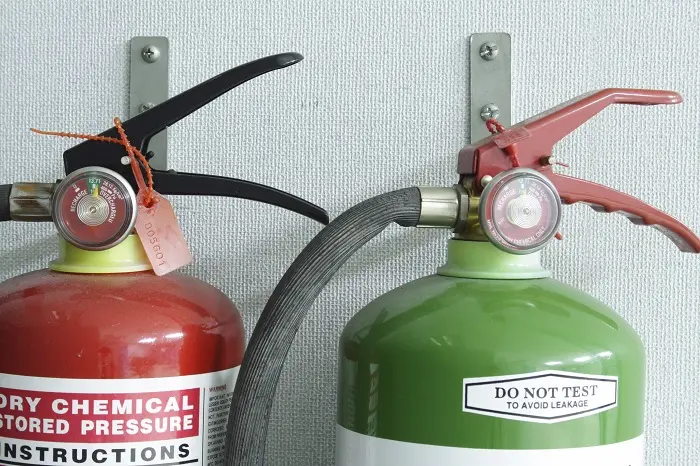Fires can break out unexpectedly, and understanding how to respond quickly and effectively is essential for safety. Paper fires, whether from documents, books, or other paper products, are common in both residential and commercial settings. Using the correct type of fire extinguisher can make a significant difference in controlling and extinguishing these fires safely. This article explores the various types of fire extinguishers available, their classifications, and specifically addresses what extinguisher to use on paper fires.
Understanding Fire Classifications
Before diving into the specific types of extinguishers, it’s crucial to understand how fires are classified. Fire classifications help determine the most effective methods for extinguishing different types of fires:
Class A: Ordinary Combustibles
Description: Fires involving ordinary combustible materials such as paper, wood, cloth, and some plastics.
Extinguishing Agents: Water, foam, dry chemical agents.
Class B: Flammable Liquids
Description: Fires involving flammable liquids like gasoline, oil, and paints.
Extinguishing Agents: Foam, dry chemical, CO2.
Class C: Electrical Fires
Description: Fires involving energized electrical equipment.
Extinguishing Agents: Non-conductive agents like CO2 or dry chemical extinguishers.
Class D: Combustible Metals
Description: Fires involving metals such as magnesium, sodium, or potassium.
Extinguishing Agents: Specialized dry powder extinguishers.
Class K: Cooking Oils and Fats
Description: Fires involving cooking oils and fats, common in kitchens.
Extinguishing Agents: Wet chemical extinguishers.
Identifying the Right Extinguisher for Paper Fires
Class A Fire Extinguishers
For paper fires, Class A fire extinguishers are the most appropriate choice. These extinguishers are specifically designed to tackle fires involving ordinary combustibles.
Types of Class A Fire Extinguishers
Water Extinguishers (Class A)
How They Work: Water extinguishers cool the burning material below its ignition temperature and remove heat from the fire.
Usage: Best for paper, wood, and cloth fires. Do not use on electrical or flammable liquid fires.
Dry Chemical Extinguishers (ABC Type)
How They Work: These extinguishers use a fine powder to smother the fire, interrupting the chemical reaction of combustion.
Usage: Effective on Class A, B, and C fires. They are versatile and can be used on paper fires as well as other types.
Foam Extinguishers
How They Work: Foam extinguishers create a blanket of foam that smothers the fire and cools the surface.
Usage: Suitable for Class A and B fires, making them effective for paper fires, especially in environments with potential flammable liquids.
Water Mist Extinguishers
How They Work: These use a fine mist of water to cool the fire while also displacing oxygen.
Usage: Effective on Class A and some Class C fires, providing versatility.
Choosing the Right Extinguisher
When selecting a fire extinguisher for paper fires, consider the following factors:
Location: Ensure the extinguisher is easily accessible and located near potential fire sources, like offices or storage areas filled with paper products.
Type of Material: Assess whether there are any other materials present that could ignite (e.g., electronics, flammable liquids).
User Training: Ensure individuals who may need to use the extinguisher are trained in its operation and understand the fire classes.
How to Use a Fire Extinguisher
Understanding how to operate a fire extinguisher is critical for effective fire suppression. The PASS technique is a widely recognized method:
Pull the pin: This will break the tamper seal.
Aim low: Point the extinguisher nozzle at the base of the fire.
Squeeze the handle: This releases the extinguishing agent.
Sweep side to side: Move the nozzle back and forth until the fire is out.
Common Mistakes to Avoid
Using the Wrong Extinguisher: Always ensure you are using the correct extinguisher for the type of fire. Using water on an electrical fire can lead to electrocution.
Not Maintaining Extinguishers: Regularly inspect and maintain fire extinguishers. Check for pressure, inspect hoses, and ensure that they are easily accessible.
Turning Your Back on the Fire: Always maintain a clear exit route when attempting to extinguish a fire. If the fire becomes too large, evacuate immediately.
Fire Safety Tips for Paper-Heavy Environments
Regular Cleaning
Keep areas where paper is stored or used clean and free of excess clutter. Regular cleaning reduces the risk of fires and allows for easier access to extinguishers in case of an emergency.
Fire Prevention Measures
Proper Storage: Store flammable materials away from paper products. Use fire-retardant storage options when necessary.
Smoke Alarms: Install and maintain smoke alarms in areas with a high concentration of paper.
Fire Drills: Conduct regular fire drills to ensure everyone knows how to respond in the event of a fire.
Employee Training
Ensure employees are trained on fire safety procedures, including how to use extinguishers and when to evacuate. Regular training helps maintain awareness and readiness.
Conclusion
Knowing what extinguisher to use on paper fires is vital for safety in any environment filled with combustible materials. Class A fire extinguishers, particularly water, dry chemical, foam, and water mist extinguishers, are your best choices for effectively combating these types of fires. Proper training, regular maintenance, and preventive measures can greatly reduce the risk of fire and enhance safety for everyone involved.
By understanding the types of extinguishers available and their appropriate applications, you empower yourself and those around you to respond effectively in emergency situations. Fire safety is not just about having the right equipment—it’s about being prepared and informed.
Related topics:

